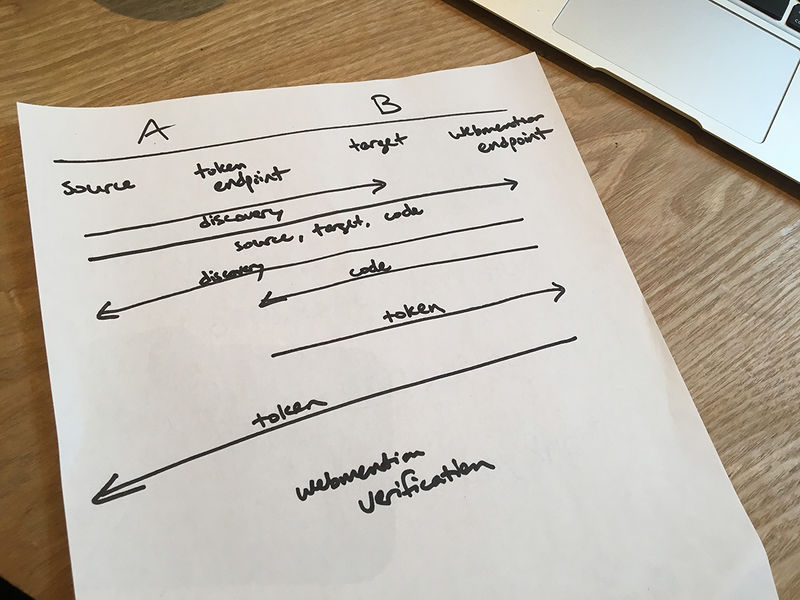2016/Brighton/directmessage
Direct Messaging and Private Webmentions was a session at IndieWebCamp Brighton 2016.
Notes archived from: https://etherpad.indieweb.org/directmessage
Participants
- Sven Knebel (sknebel)
- aaronpk
- sgreger
Notes
motivation: finding people
main issues:
- how do people know which channel to use to get in touch? (motivated by challenges of yesterday's early bird meet-ups)
- twitter does not allow DMs to non-reciprocal contacts unless they allow it (i.e.contacting in twitter is by default public, which may not always be desirable)
- every medium is only being used by a sub-group of people
long-standing convention: contact-page on the website
- aaronpk: list in order of preference
- manual, but efficient
aaronpk has an automated indication of the current time zone he is in displayed (constant update from the smartphone)
private priority channels
pattern: private (unlinked) pages (tantek, sebastian greger) for high-priority contacts
- give out the URL in person, or on a business card
sknebel has a separate email address he uses when traveling he gives to family and close contacts. checks that address more often when traveling and main address only occasionally.
Issue as Twitter DMs above: might not know everybody that should have access before -> doesn't work well for remote/fleeting contacts.
Webmention Vouch theoretically could help (e.g. trust an attendee listing page)
contact forms:
- could automatically send notifications to different channels
- could offer an option to specify priority ("notify me", "I'll see it in the evening"), then the backend takes care of delivering the message based on my own preferences
private webmentions
Note:  Aaron Parecki wrote up more formalized spec of last variant on private-webmention
Aaron Parecki wrote up more formalized spec of last variant on private-webmention
previous attempts:
- normal webmention to site with access control (has to be passable by webmention receiver)
- indieauth flow?
who generates the token?
receiver generates token
- normal webmention
- receiver generates token from own endpoint, passes it in request fetching source page. (potentially first fetch to discover auth is needed, if not indicated in extended WM)
- source page discovers receivers token endpoint, verifies token, allows
Note: token would have to be scoped, otherwise sender could use token to read other posts send to receiver
sender, in URL
- basically just posts with hard-to-guess private URLs
- + works with static sites
sender: client logs in
- seperate token exchange
- sender sends webmention to receiver,
- receiver fetches, notices that login required
- logs into senders page, gets token
- re-fetches with token
- + similar to how a user log ins
- + token could be reused for quick back-and-forth
- idea: webmention could contain authorization code (OAuth terminology) -> see next section
Issue: How to recognize authentication required and that the protocol is useable? Issue: What does "receiver logins" actually look like internally?
sender: client gets auth token
- sender sends webmention to receiver, with authorization code
- receiver sees authorization code -> needs exchange code for token
- fetch source page, get token endpoint (in http header of error page, maybe in some way in page source?)
- exchange authirization code to acces token
- fetch source page with Authorization header
- verify source page
- allow token reuse, but each request has to include new authorization code if necessary
 Aaron Parecki wrote up more formalized spec on private-webmention
Aaron Parecki wrote up more formalized spec on private-webmention
Issue token reuse: how to discover scope (is old token usable for this request)
discovery of endpoint should have support, for better UX

